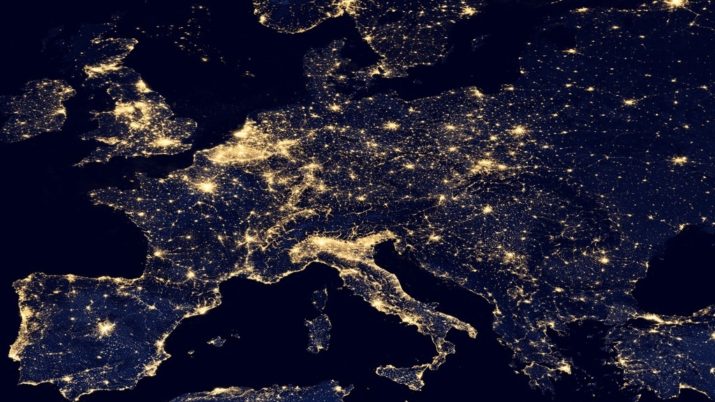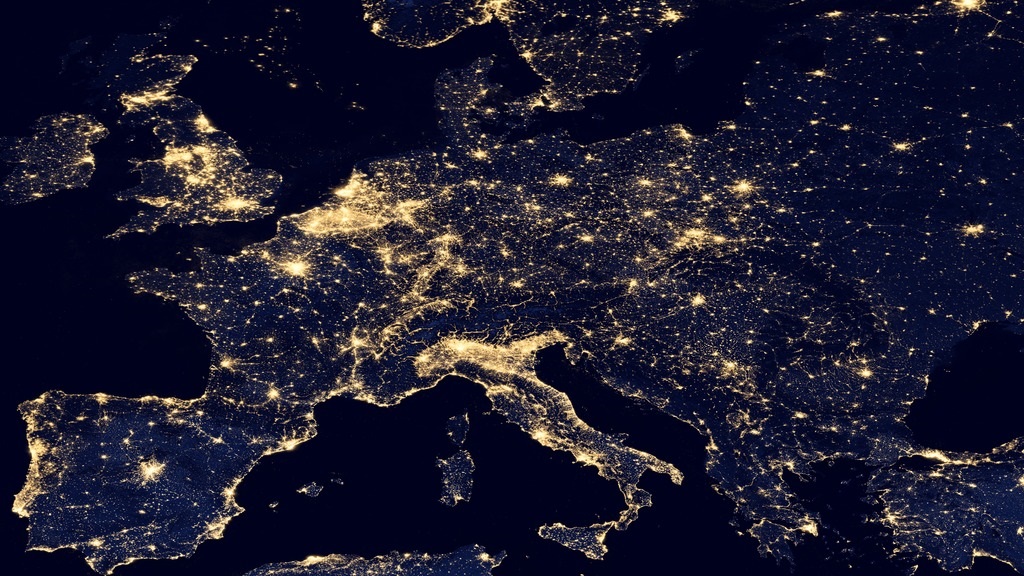

An introduction to our special feature Facing the Anthropocene.
Will the human species soon go extinct as the large mammals did in the late Pleistocene? In just a few generations, the relationship between the planet and the societies that inhabit it has undergone profound transformations. Our global dependence on fossil fuels, nuclear power and its radioactive residuals, intense resource extraction economies, genetic manipulations, air, soil, and water contamination, and byproducts of modernity, such as waste material like plastics and other synthetic polymers, have all caused great disturbances in the Earth ecosystems on which many species depend, including the human species. The proposition that humans have put an indelible imprint on the planet biologically, chemically, and morphologically is encapsulated in the concept of the Anthropocene. Indeed, the magnitude of human domination on the natural world has led some scholars to describe humans as a geological factor in the transformation of the planet. Hence, we may have entered not simply a new historical era, but a new geological epoch. Although there is no consensus among scientists over that proposition, nor the name it should be given, what is generally agreed upon is that the intensity and scale of the impact of the human species on the environment is so unprecedented that it warrants a new framework, new kinds of actions, new ways to go about facing or mitigating what Carole Crumley calls the disruptions in the Earth machinery, which are consequences of short-sighted human activities driven by productivist economic goals over communal well-being and social justice.
At the turn of the new Millennium, with the 1992 Rio Earth Summit, “sustainable development” had become a buzz word to characterize the obligations of the human species to the planet and to future generations. Along with “resilience,” “sustainability” was quickly mainstreamed by the media and incorporated in development agendas across the world. Yet, although there have been some progress recorded in terms of CO2 emissions, certain issues have lost the interest of the media (how come we do not hear about acid rains or the hole in the ozone layer anymore?). So, is the Anthropocene nothing more than yet another publicity tactic to face our chronic inability to resolve our destructive relationship with the environment that supports us? How valuable is it as a conceptualization of that relationship? What imaginaries does it trigger? What moral obligations does it (hopefully) awaken? What rational solution-seeking does it make possible? Together, the contributors to the special feature “Facing the Anthropocene” address three main topics that recurrently arise when discussing the Anthropocene. What is it and what work does it do? When did it start and what anthropogenic and historical processes drove it? What are some solutions and opportunities for reaction? These three fundamental lines of inquiry guide scholars from a slew of disciplines in their attempts to understand climate change—often used as a proxy for the Anthropocene—across time, place, and scale, and to position themselves in the seeking of solutions.
In her interview, Carole Crumley contemplates whether humanity may be embarked on a “planetary Titanic,” and makes an argument for the past to bring humans to shore safely. As she discusses with us her deep history approach to the concept of the Anthropocene, the historical ecology scholar reveals her understanding of the notion as an awakening mechanism, which, with guarded optimism, she hopes will mobilize communities into action, especially at the local level. She makes the case for the human species to envisage its future by knowing and retooling good ideas from the past in terms of environmental management. This also requires humans to use their good observation skills and develop a new idea of progress that is not destructive to the planet. Indeed, to analyze climate change, scientists need climate observation data and the tools and institutions necessary to enable them. In their research article, Chiara Bertolin and Dario Camuffo tell the fascinating story of one early scientific innovation to measure temperature fluctuations in Italy at the time of the Medici. The Little Florentine Thermometer and the Medici meteorological network exemplify early concerns for quantifying, standardizing, recording, and sharing observations to account for climatic variations across time and space. The precursory calibrated instrument is shown to have provided accuracy in spite of its artisanal construction and a difficult institutional context at a time when the scientific method and religion were often at odds. Without this fundamental object, the thermometer, and meteorological archives, modern-day climate scientists may not be able to do their work. Several centuries of technological innovations separate us from these pioneering efforts, but our scientific purpose has not changed.
Capitalocene and Industrialocene have emerged as alternative terms to capture the relationship between the human species and the natural environment. David Idol’s research in agricultural history demonstrates that it is the advent of capitalism and economic globalization—driven by technology and new consumption patterns in the West—that transformed landscapes and hollowed out rural life in nineteenth century Greece. Focusing on industrialization, ecocritic John Parham engages with Victorian ecology and the question over the inception of the Anthropocene through his book review of The Sky of Our Manufacture: The London Fog in British Fiction from Dickens to Woolf, showing that literary criticism can too inform the understanding of how capital and industry shaped the ways in which the human species relates to and imagines the environment. What these contributions confirm is that the context of industrialized cities and their “fog-demon” is not to be apprehended in isolation from the rural. Certainly, rural-urban linkages are significant in understanding the environmental crisis. And fundamental to this question is that of the food supply for a growing population that is also increasingly urban. The book Agriculture in Capitalist Europe, 1945–1960: From Food Shortages to Food Surpluses, reviewed by Brídín Carroll, points to the post-WWII agricultural and rural livelihood transformations resulting from the quest for increased productivity. The review highlights several environmental consequences that ought to be taken up when discussing the impact of agricultural practices on the planet.
The art series Indefinite Toxic Circles, featuring artwork by John Sabraw, Conohar Scott, and Mandy Barker, illuminates the dangers confronting our waters, from leaking pipes to discarded plastics, to the long-term impact of these toxic products on our most delicate and vulnerable ecosystems and sites. Given the recent declarations of climate change and environmental issues to be “fake news,” projects such as these are crucial in reconnecting Humanity and Nature, proof that scientific and artistic collaborations can lead to ground-breaking ideas and sustainable solutions.
When faced with the multilayered, multi-scalar, and trans-temporal complexities of the Anthropocene that this special feature samples, how do we, social scientists, humanists, or artists, go about teaching it? In Campus, we present two approaches through the reading group syllabi on Climate Change: Disciplinary Challenges to the Humanities & the Social Sciences at the University of Chicago and, at the University of Worcester (UK), John Parham’s course on Green Media and Popular Culture. Both pedagogical projects demonstrate that interdisciplinarity is key in addressing environmental change and seeking solutions to the current crisis. In the Q & A we conducted with the University of Chicago scholars who spearheaded the reading group, we learned how different disciplinary approaches and actors can come together fruitfully in discussing the Anthropocene and climate change.
This special feature asks more questions than it answers. This is what the Anthropocene does. It puts us on alert so we can formulate the right questions and mobilize to seek solutions. Tracey Heatherington and Bernard Perley, in sharing with us their voyage into the Svalbard global seed vault, account for one set of efforts to save some of the Earth vegetal biodiversity at a time when it is under attack. They consider the Anthropocene as an object of cultural imagination that links past, present, and future. We follow them as tourists in the iced belly of the planet where the Earth’s genetic treasures are kept. The seed bank may be the ultimate image for the Anthropocene. It also is another testimony of the contemporary obsession for archiving, recording, “heritaging.” Although the saving of the Earth’s DNA in the Arctic seems like it could be borrowed from Doomsday scenario science fiction, it is one solution to biodiversity loss (although skeptics question whether these seeds could grow in a future and still unknown environment). But it also constitutes a reshaping of the way societies conceive of the role of local communities, and notably farmers, who have historically been the keepers of the Earth’s plant genetic resources.
So, is there hope? Carole Crumley is inspired by young people and their reactions to the ongoing assaults onto the environment. Tracey Heatherington and Bernard Perley came out of the seed vault sensing the hope about the infinite potential of our seed heritage. The University of Chicago group and John Parham show that interdisciplinary exchanges and teachings are taking place to help us think in more creative and concerted ways about the environment. The Anthropocene asks that we fundamentally revisit the human-environment relationship and our responsibilities as stewards of the planet, reviving ideas such as décroissance (de-growth) and localization, encouraging us to put our focus on small-scale communities and renewed indicators of progress. If we ask what ideas from the past are useful in the present to help us shape our future, another crucial question we need to ask ourselves is that of the legacy we intend to leave. Humanity gave itself the means of its own destruction. Will it apply its genius to the development of those of its salvation? It would be ironic that the Anthropocene precipitates the extinction of the species that gave it its very name.
Research
– “Commercial Agriculture and the Landscape of Capitalism in Nineteenth-Century Greece” by David Idol
– “Fieldnotes from Svalbard: How Global Dreamings Take Root in the Arctic Frontier” by Tracey Heatherington and Bernard C. Perley
– “The world’s First Meteorological Network (1654-1670) and Experimental Scientific Society (1657-1667), and the invention of the Little Florentine Thermometer” by Chiara Bertolin and Dario Camuffo
Poetry
– Four Poems and Visuals from Astroecology by Johannes Heldén, translated from the Swedish by Elizabeth Clark Wessel & Kirkwood Adams
– Three Poems by Mária Ferenčuhová, translated from the Slovak by James Sutherland-Smith
– Four Poems by Anita Pajević, translated from the B/C/S by Mirza Purić
– Seven Poems by Gyrðir Elíasson, translated from the Icelandic by Megan Matich
Reviews
– Hackers, reviewed by Alexis Almeida
– The Sky of Our Manufacture: The London Fog in British Fiction from Dickens to Woolf, reviewed by John Parham
– Agriculture in Capitalist Europe, 1945-1960: From Food Shortages to Food Surpluses, reviewed by Brídín Carroll
Interviews
– “Is Humanity Already Aboard a Planetary Titanic?: An Interview with Carole Crumley” by Hélène B. Ducros
Visual Art
– Indefinite Toxic Circles, an art series curated by Nicole Shea
Campus
– Syllabus: Climate Change: Disciplinary Challenges to the Humanities & the Social Sciences by Fredrik Albritton Jonsson, Benjamin Morgan, and Emily Lynn Osborn
– “On Teaching the Anthropocene: A Q&A with Michael Dango, Fredrik Albritton Jonsson, Benjamin Morgan, and Emily Lynn Osborn” by Hélène B. Ducros
– Syllabus: Green Media and Popular Culture by John Parham
Hélène B. Ducros holds a PhD in human geography and a JD from the University of North Carolina at Chapel Hill. She chairs the Research Editorial Committee at EuropeNow.
Photo: Europe At Night | NASA/NOAA
Published on May 2, 2017




